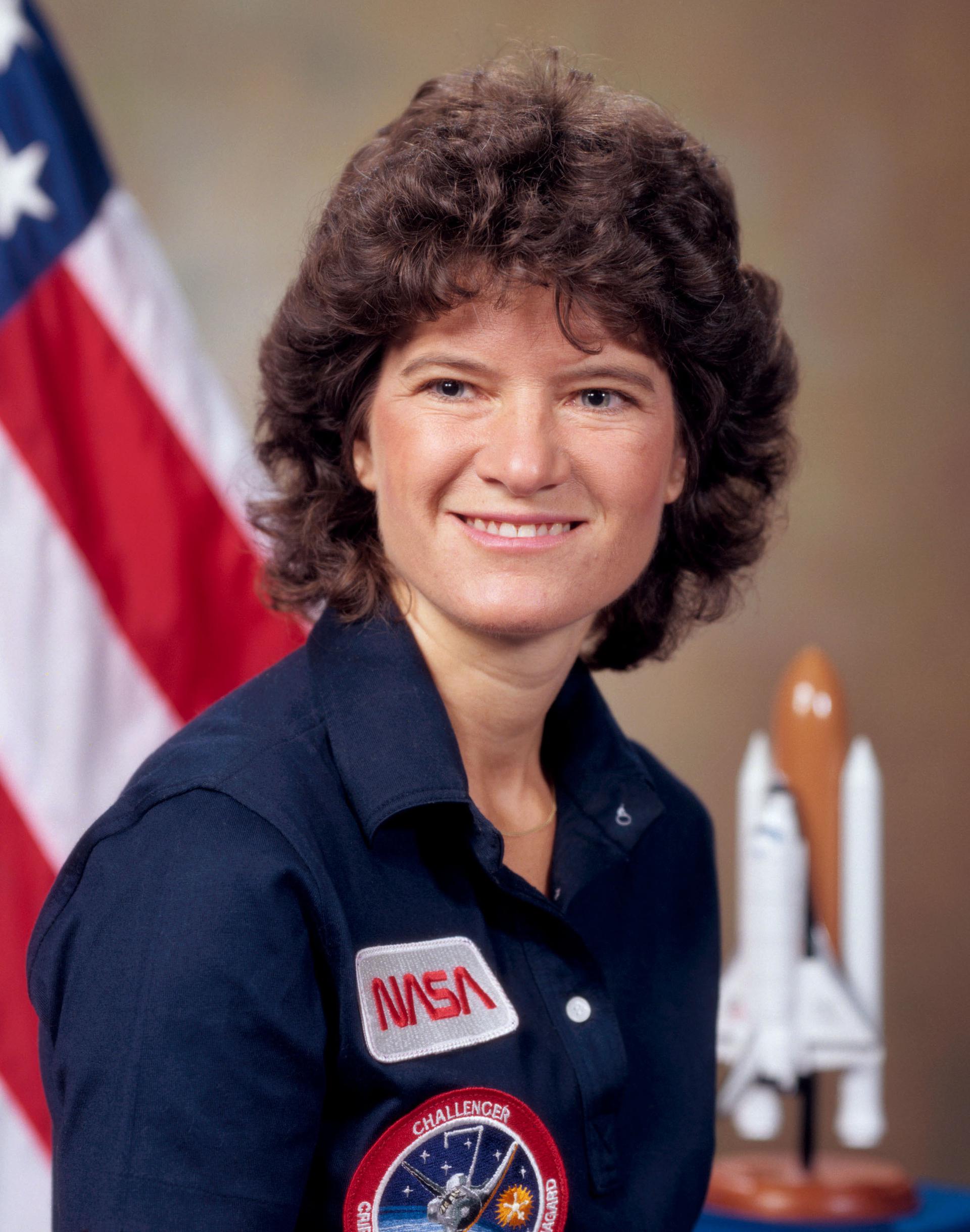Sally Ride
American - (NASA)
Deceased
Date of Birth: May 26, 1951
Date of Death: July 23, 2012
Sally Kristen Ride was an American astronaut, physicist, and engineer. Born in Los Angeles, she joined NASA in 1978 and became the first American woman in space in 1983. Ride was the third woman in space overall, after USSR cosmonauts Valentina Tereshkova (1963) and Svetlana Savitskaya (1982). Ride remains the youngest American astronaut to have traveled to space, having done so at the age of 32. After flying twice on the Orbiter Challenger, she left NASA in 1987. She worked for two years at Stanford University's Center for International Security and Arms Control, then at the University of California, San Diego as a professor of physics, primarily researching nonlinear optics and Thomson scattering. She served on the committees that investigated the Challenger and Columbia space shuttle disasters, the only person to participate in both. Ride died of pancreatic cancer on July 23, 2012.
Space Shuttle Challenger / OV-099 | STS-7
National Aeronautics and Space Administration | United States of AmericaKennedy Space Center, FL, USA
June 18, 1983, 11:33 a.m.
Status: Success
Mission:
STS-7 was the second mission for the Space Shuttle Challenger. It deployed several satellites into orbit. It was the first mission scheduled to land at Kennedy Space Center however it had to divert to Edwards Air Force Base due to bad weather. STS-7 carried Sally Ride, America's first female astronaut.
Low Earth OrbitSpace Shuttle Challenger / OV-099 | STS-41-G
National Aeronautics and Space Administration | United States of AmericaKennedy Space Center, FL, USA
Oct. 5, 1984, 11:03 a.m.
Status: Success
Mission:
STS-41-G was the thirteenth flight of the shuttle program and sixth of the Space Shuttle Challenger. It was the second landing made at the Kenendy Space Center. It was the first crew to carry two women, the first American EVA involving a woman, the first Australian Astronaut and first Canadian Astronaut.
Low Earth OrbitThe National Aeronautics and Space Administration is an independent agency of the executive branch of the United States federal government responsible for the civilian space program, as well as aeronautics and aerospace research. NASA have many launch facilities but most are inactive. The most commonly used pad will be LC-39B at Kennedy Space Center in Florida.
Falcon 9
Starlink Group 15-12
Space Launch Complex 4E - Vandenberg SFB, CA, USAA batch of 27 satellites for the Starlink mega-constellation - SpaceX's project for space-based Internet communication system.
Electron
Raise and Shine (RAISE-4)
Rocket Lab Launch Complex 1B - Rocket Lab Launch Complex 1, Mahia Peninsula, New ZealandRAISE-4 (RApid Innovative payload demonstration Satellite-4) is a Japan Aerospace Exploration Agency (JAXA) satellite for on-orbit demonstrations of …
Kuaizhou 11
DEAR-5
Launch Area 95A - Jiuquan Satellite Launch Center, People's Republic of ChinaDEAR-5 is a commercial in-orbit payload and micro-gravity experiments hosting spacecraft developed by Chinese commercial company AZSPACE for various …
Long March 12
SatNet LEO Group 16
Commercial LC-2 - Wenchang Space Launch Site, People's Republic of ChinaA batch of Low Earth Orbit communication satellites for the Chinese state owned SatNet constellation operated by the China Satellite Network Group. …
Falcon 9
Starlink Group 6-90
Space Launch Complex 40 - Cape Canaveral SFS, FL, USAA batch of 29 satellites for the Starlink mega-constellation - SpaceX's project for space-based Internet communication system.



